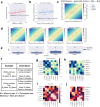Time-sensitive prefrontal involvement in associating confidence with task performance illustrates metacognitive introspection in monkeys
- PMID: 35945257
- PMCID: PMC9363445
- DOI: 10.1038/s42003-022-03762-6
Time-sensitive prefrontal involvement in associating confidence with task performance illustrates metacognitive introspection in monkeys
Abstract
Metacognition refers to the ability to be aware of one's own cognition. Ample evidence indicates that metacognition in the human primate is highly dissociable from cognition, specialized across domains, and subserved by distinct neural substrates. However, these aspects remain relatively understudied in macaque monkeys. In the present study, we investigated the functionality of macaque metacognition by combining a confidence proxy, hierarchical Bayesian meta-d' computational modelling, and a single-pulse transcranial magnetic stimulation technique. We found that Brodmann area 46d (BA46d) played a critical role in supporting metacognition independent of task performance; we also found that the critical role of this region in meta-calculation was time-sensitive. Additionally, we report that macaque metacognition is highly domain-specific with respect to memory and perception decisions. These findings carry implications for our understanding of metacognitive introspection within the primate lineage.
© 2022. The Author(s).
Conflict of interest statement
The authors declare no competing interests.
Figures







Similar articles
-
Mnemonic Introspection in Macaques Is Dependent on Superior Dorsolateral Prefrontal Cortex But Not Orbitofrontal Cortex.J Neurosci. 2019 Jul 24;39(30):5922-5934. doi: 10.1523/JNEUROSCI.0330-19.2019. Epub 2019 May 23. J Neurosci. 2019. PMID: 31123101 Free PMC article.
-
Domain-specific impairment in metacognitive accuracy following anterior prefrontal lesions.Brain. 2014 Oct;137(Pt 10):2811-22. doi: 10.1093/brain/awu221. Epub 2014 Aug 6. Brain. 2014. PMID: 25100039 Free PMC article.
-
Causal Evidence for Mnemonic Metacognition in Human Precuneus.J Neurosci. 2018 Jul 11;38(28):6379-6387. doi: 10.1523/JNEUROSCI.0660-18.2018. Epub 2018 Jun 19. J Neurosci. 2018. PMID: 29921714 Free PMC article.
-
Neural circuits for retrospective and prospective introspection for the past, present and future in macaque monkeys and humans.Neurosci Res. 2024 Apr;201:46-49. doi: 10.1016/j.neures.2024.02.003. Epub 2024 Mar 8. Neurosci Res. 2024. PMID: 38460842 Review.
-
Explicit memory and cognition in monkeys.Neuropsychologia. 2020 Feb 17;138:107326. doi: 10.1016/j.neuropsychologia.2019.107326. Epub 2020 Jan 7. Neuropsychologia. 2020. PMID: 31917205 Free PMC article. Review.
Cited by
-
Metacognition in nonhuman primates: a review of current knowledge.Primates. 2025 Jan;66(1):9-25. doi: 10.1007/s10329-024-01169-x. Epub 2024 Dec 14. Primates. 2025. PMID: 39673592 Free PMC article. Review.
-
Confidence in visual detection, familiarity and recollection judgments is preserved in schizophrenia spectrum disorder.Schizophrenia (Heidelb). 2023 Sep 7;9(1):55. doi: 10.1038/s41537-023-00387-4. Schizophrenia (Heidelb). 2023. PMID: 37679358 Free PMC article.
-
Metacognition as a Consequence of Competing Evolutionary Time Scales.Entropy (Basel). 2022 Apr 26;24(5):601. doi: 10.3390/e24050601. Entropy (Basel). 2022. PMID: 35626486 Free PMC article.
-
Metacognitive sensitivity: The key to calibrating trust and optimal decision making with AI.PNAS Nexus. 2025 Apr 24;4(5):pgaf133. doi: 10.1093/pnasnexus/pgaf133. eCollection 2025 May. PNAS Nexus. 2025. PMID: 40417078 Free PMC article.
References
Publication types
MeSH terms
LinkOut - more resources
Full Text Sources

